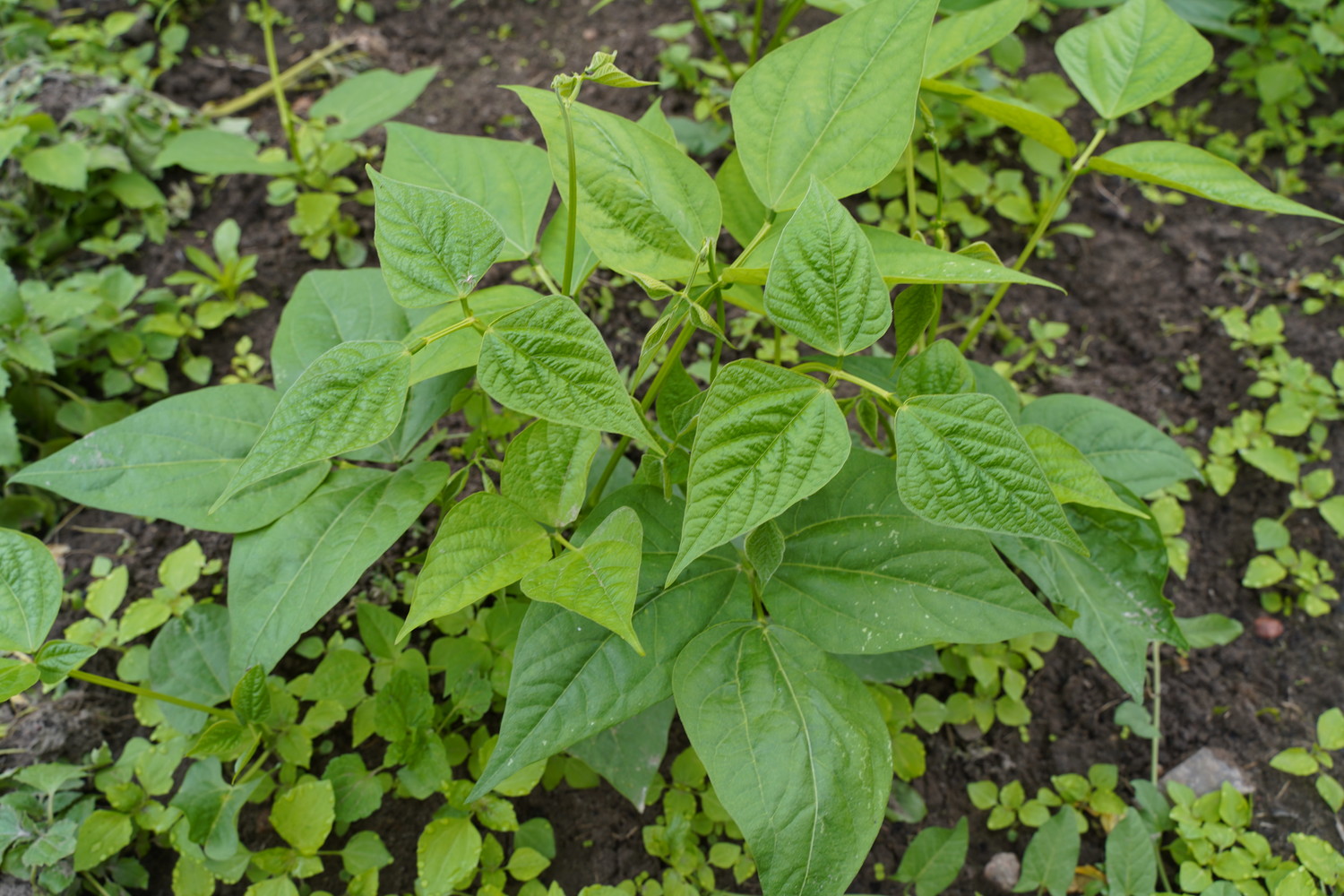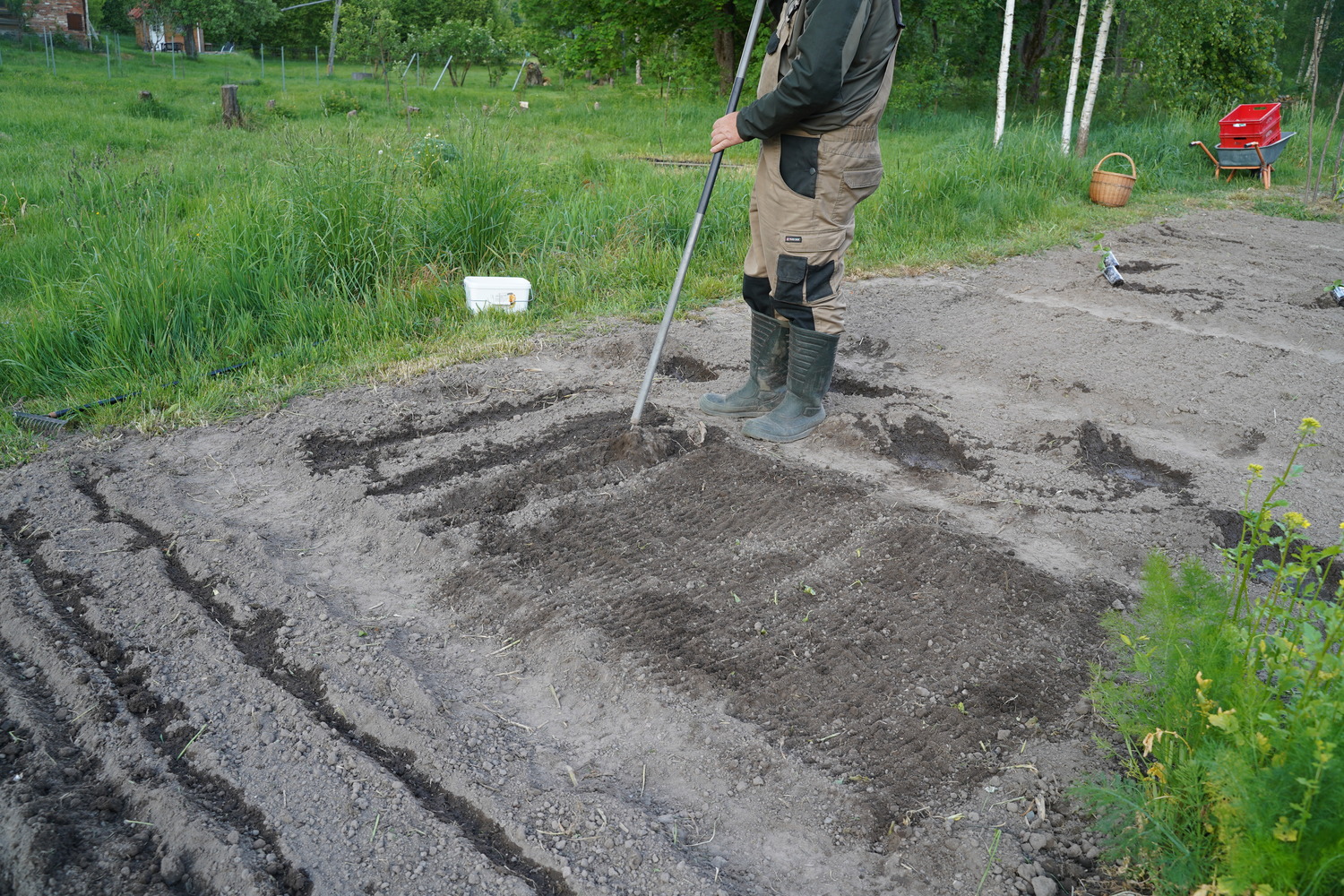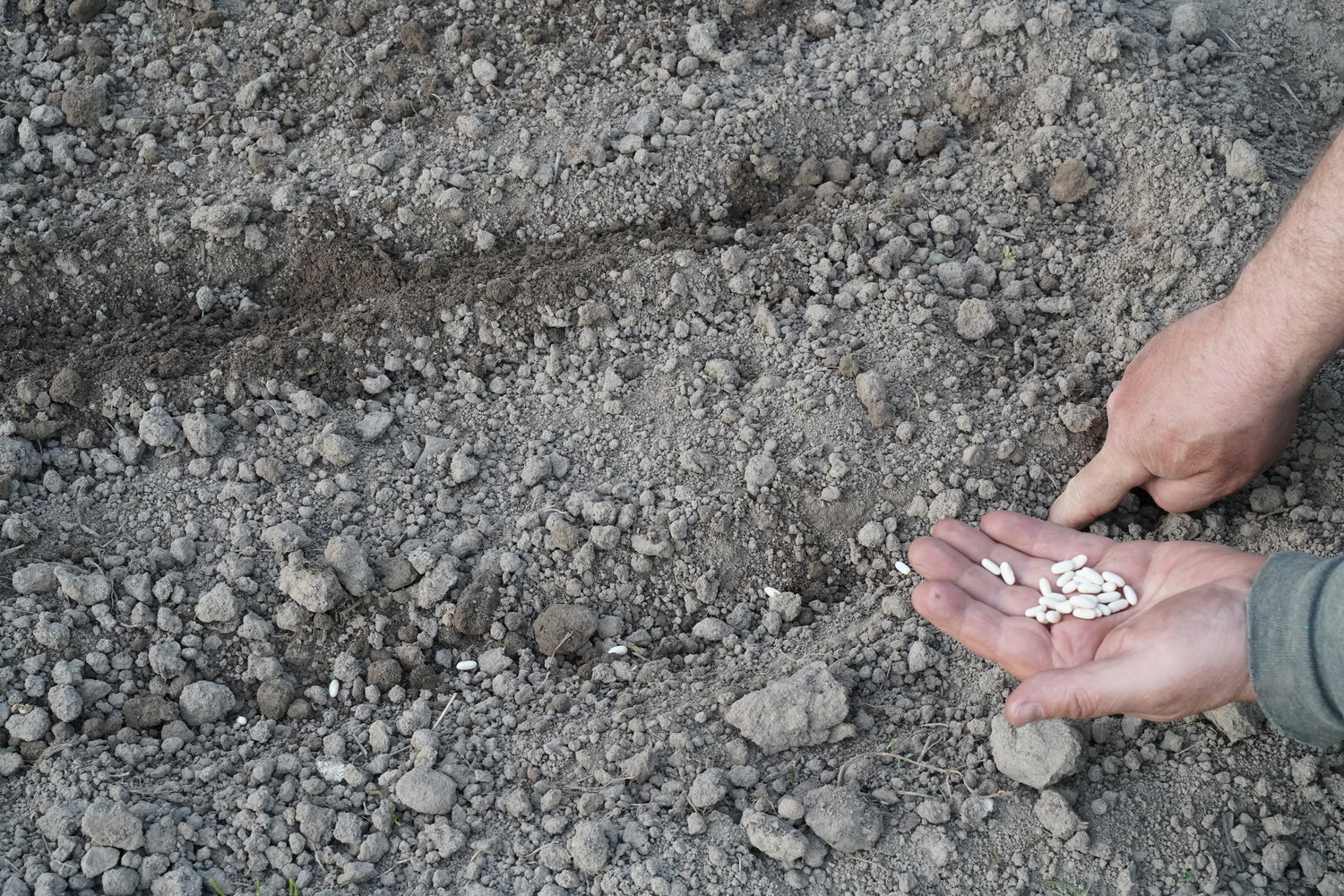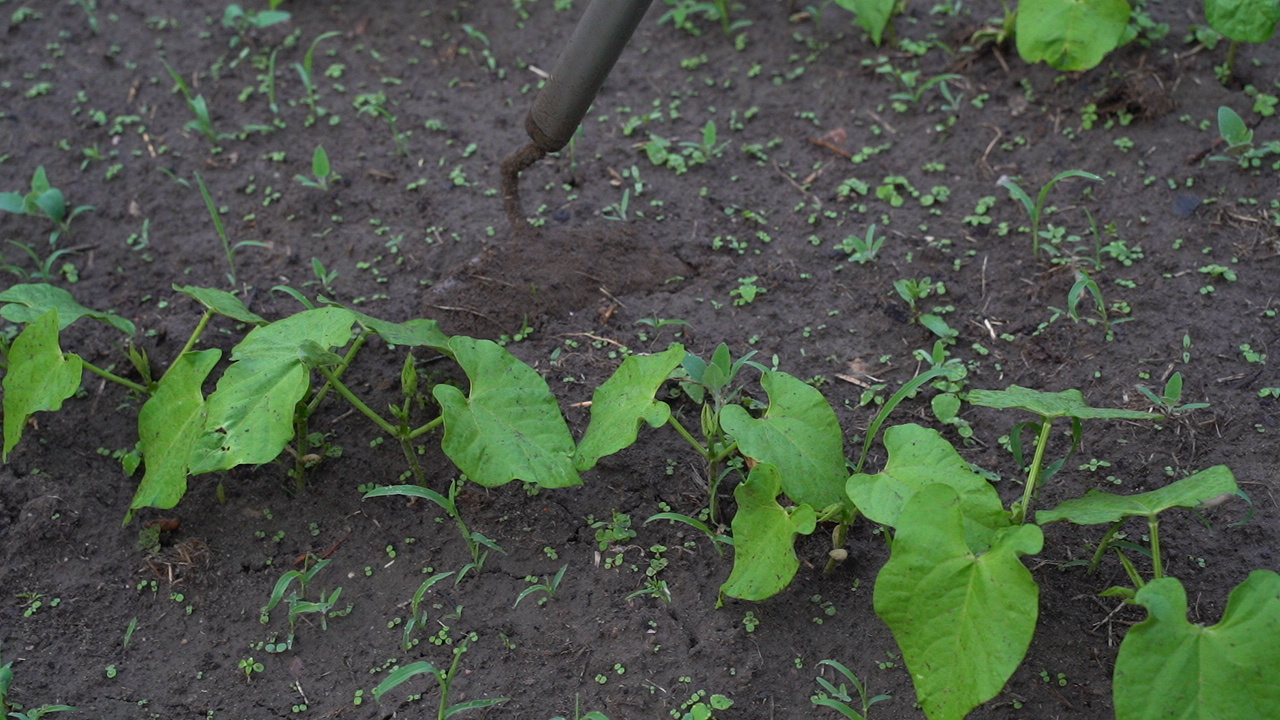The homeland of beans is South America, which is probably why they are still mostly cultivated there today. In Europe, beans began to be grown for food around the mid-16th century and became especially popular in Italy, France, and Spain.

Bean cultivation is not difficult, as beans are not demanding regarding fertilisers, care, or climatic conditions. Among other vegetables, beans hold a special place due to their nutritional value. Their seeds contain up to 30% protein, a large amount of carbohydrates, mineral salts, and their pods are rich in vitamin C, B-group vitamins, and provitamin A. Beans are one of the most nutritious vegetables, and their proteins are well absorbed by the human body.
Both fresh and mature beans are used in a variety of dishes and are suitable for freezing and canning. Additionally, as members of the legume family, these plants enrich the soil with nitrogen, which is fixed from the air by nodule bacteria living on their roots, making them highly valued as preceding crops.
Based on pod type, beans are classified into shell beans and snap beans. In shell beans, the seeds are consumed, while in snap beans, the young, fleshy pods are eaten before the seeds have fully developed. Snap bean pods do not contain a parchment layer in the walls, and fibres along the seams develop slowly or may be absent altogether.
According to stem height, beans are classified into bush, semi-pole, and pole varieties. The stems of pole beans can grow up to 2–5 meters long, so they require tall supports for cultivation.
Bean seeds can be of various colours, ranging from white to black, and they can also be multicoloured. However, in our country, white-seeded beans are most commonly grown. Nevertheless, these beans are more susceptible to unfavourable weather conditions, so before planting beans, it is advisable to learn more about the variety of cultivars and choose those with greater resistance.
Snap beans differ in pod colour, which can be green, yellow, or even purple, but the most popular varieties are those with yellow pods. Additionally, snap beans are valued as early vegetables, as the pods of some varieties are ready for consumption by the end of June.
Soil for Beans and Bean Fertilisation
Beans grow well in fertile, slightly humus-rich, loamy soil with a neutral ph (6.0-6.8), loose and quick to warm up. Beans can be grown after various preceding crops, except for other legumes. It is best to plant them after cabbage, potatoes, cucumbers, tomatoes, and slightly less after carrots, beets, and onions. They grow best after manure-fertilised vegetables, potatoes, root vegetables, and winter cereals. It is recommended to plant beans in the same spot only after 4-5 years.
Bean plants have a strong root system, which allows them to absorb nutrients from deeper soil layers. Beans are fertilised with mineral fertilisers, but decomposed manure (20-30 t/ha) or compost can be incorporated into the soil in the fall. In the fall or early spring, before the main soil cultivation, superphosphate (300-400 kg/ha), potassium salt, or potassium chloride (200-300 kg/ha) fertilisers are spread, as phosphorus and potassium fertilisers increase bean seed yield, improve pod quality, and enhance plant resistance to diseases and pests. Nitrogen fertilisers (ammonium nitrate - 100-150 kg/ha) are applied before sowing or when the plants begin to sprout, before the activity of the nodule bacteria starts. In addition to the main nutrients, beans particularly need magnesium, as well as microelements like boron and molybdenum.
Sowing Beans
Most bean diseases and pests spread through seeds, so it is recommended to disinfect them either thermally or chemically before sowing. For thermal disinfection, bean seeds should be kept at 60°C for 25 minutes or at 50°C for 6 hours, then treated with contact fungicides.
Beans should be planted in a sunny and wind-protected location, as they are plants that prefer light and warmth. They are sown after the last frost, when the soil warms up to 10-12°C, typically in the middle of May, when lilacs start blooming. To harvest fresh snap bean pods earlier, they can be sown earlier and covered with a film, or planted as 20-25 day old seedlings. For seedlings, seeds are sown in pots at the beginning of May. Seeds can be sown in the field every 2-3 weeks until the beginning of July, extending the period of fresh bean consumption.
Beans are recommended to be sown in rows with a 40-45 cm spacing or in two-row strips. Between rows, leave a 20 cm gap, and between strips, a 50 cm distance. However, it is important to follow the optimal planting distances recommended by seed suppliers for each variety. The seeds should be placed at a depth of 3-5 cm, with a 7-10 cm distance between plants. The seed rate is 100-120 kg/ha. Snap bean crops should not be planted too densely. Beans sown less densely produce more pods and are easier to harvest. When growing pole beans, before sowing, stakes should be set up 0.5 meters apart, and a 1-meter distance should be left between rows. Four to six seeds are sown at each stake in a nest-like formation. To ensure even and faster germination, it is recommended to roll the seeds after planting.
Bean Care
When growing beans, it is necessary to constantly cultivate between rows, remove weeds, and fertilise. After 5-8 days of germination, the first cultivation of the rows can be done if a crust forms on the soil surface above the seeds. Once the seedlings emerge, cultivation should be avoided, as there is a risk of damaging the fragile shoots. The first cultivation can be done when the plant reaches 6 cm, and the second cultivation when the first true leaves appear. If the soil dries out, beans should be hilled. Hilling helps the plants withstand strong winds and rain. Beans are rarely watered before flowering, but if it does not rain for an extended period, watering should be done. During flowering and pod formation, beans should be watered twice a week, with 10-15 litres per square meter. Flowering plants grow very intensely, with their stems elongating by 2-3 times.
To ensure a good harvest, beans need to be fertilised with mineral fertilisers, and thus it is effective to fertilise them with micronutrient-rich fertilisers through the leaves. At the beginning of bud formation, beans are fertilised with amino acids and plant-based fertilisers through the leaves. During this phase, biostimulants in liquid fertilisers enhance plant vitality, phosphorus stimulates the development of generative organs, potassium encourages the accumulation of nutrients in the stems, and molybdenum stimulates the activity and productivity of nodule bacteria. Micronutrients in this phase promote more abundant flowering and shorten the internodes, making the beans grow shorter and more resistant to lodging. If foliar fertilisation is not possible, beans should be fertilised twice. The first fertilisation is done when the first true leaf appears, using a mixture of superphosphate (15-20 g), ammonium nitrate (0.5 g), and potassium salt (10-15 g) per square meter. The second fertilisation should occur 3 weeks later, when the flowers begin to form.
Depending on the variety, weather, and soil quality, the bean growing season lasts 2-3 months. To grow more beans, it is important to harvest the mature pods on time. By breaking open a pod, you can check if the beans are ripe. Snap beans are harvested when the pods are flat, crunchy (breaking easily when bent), and do not have thick fibrous threads or a parchment layer. The best time to harvest is when the seeds are the size of a wheat grain. Overripe snap beans will be tasteless. Pods are harvested from late June to August. Under normal conditions, the pods can be stored for no more than a day, as they quickly over-ripen, become hard, and dry out. However, at a lower temperature (around 0°C) and high relative humidity (about 90%) in a room, they can last 5-7 days. The pods should be harvested every few days; if harvested less frequently, they will become overripe and less tender. Dry beans are harvested when the pods turn yellow and the beans appear fully mature.
Bean Pests and Diseases
Bean yields can be significantly reduced by diseases and pests. A widespread viral disease of beans is the common bean mosaic virus, which affects beans with longer vegetative periods more severely. The first disease foci are created by beans grown from infected seeds. The seedlings are already spotted with yellow mosaic-like marks. Light green and yellow spots appear on young leaves. Beans infected during the growing season are less affected by the common mosaic virus than those grown from infected seeds.
Protection. Use seeds from a healthy crop and sow as early as possible. Remove diseased plants from the seed crop before flowering, if they make up no more than 15% of the plants. Otherwise, discard the entire seed batch. Control aphids, as they spread the virus of this disease.
Damping-off is a ubiquitous fungal disease of beans. The fungus damages the above-ground parts of the plant throughout the growing season. The disease is most severe on seedlings. Elongated, brownish, and water-soaked spots appear on cotyledons. Affected seedlings die, and secondary infections develop. Later, the leaves, petioles, and stems of infected plants are marked with brown, water-soaked, darker edge spots.
Protection. Beans should not be grown in the same field for at least 3-4 years. Choose sunny, wind-exposed areas, avoid overcrowding the crop, and plant healthy, treated seeds. If necessary, treat the crop with fungicides.
Bean black mold attacks weakened plants, especially those infested by bean aphids, as the sticky excretions from aphids provide an excellent environment for the fungus to develop. The pods and stems of infected beans are covered with dark green, almost black mold. The disease can spread more rapidly in areas where beans are planted too densely and in excessive moisture. The causative agent of black mold overwinters in the remains of infected plants and contaminated seeds.
Protection. Avoid over-fertilising plants. After harvesting, plough the soil deeply and control aphids during the growing season.
Bean sclerotinia rot is a highly specialised fungus that can parasitise a wide range of plants, both outdoor and greenhouse-grown. Beans become infected when fully grown. The pods are most often affected, although other above-ground parts of the plant can also rot. A white, cotton-like fungal mycelium forms on the surface of the rotting plant parts. Beans can also suffer from a latent form of sclerotinia rot. In this case, no mycelium appears on the surface of the plants. These plants usually turn yellow, wilt, and rot.
Bean (Botrytis) grey mold is a highly specialised fungus that parasitises a range of plants during their growing season and even on vegetables stored in warehouses. Beans are more severely affected by grey mold during cool, rainy summers, especially in dense plantings, in areas poorly ventilated by wind, during the second half of the summer, and when seeds are stored too damp in poorly ventilated storage.
Protection. Do not plant beans too densely, and avoid growing them in poorly wind-ventilated, shaded areas. Use well-cleaned, treated seeds. Avoid excessive fertilisation, and after harvesting, remove plant debris and plough the soil deeply.
The seed maggot damages the seeds and seedlings of beans, peas, cucumbers, and other plants. It is a small, 3-5 mm long grey fly with two wings. It has three long, dark brown stripes on its abdomen. The flies start flying in spring when cherries begin to bloom. The females lay white, elongated eggs, about 1 mm long, near the germinating plants. The larvae feed on decaying organic matter (which is why they are often found in freshly manured soils), germinating seeds, and seedlings. Seeds that are planted do not sprout and contain burrowed, white, grub-like, headless, and legless larvae. They grow up to 7 mm, with a sharp front body end and a blunt rear. In the stems and leaves of seedlings, the larvae create tunnels. Damaged seedlings dry out and wilt. The growth tip often dries up as well.
Protection. Treat seeds with fungicide, use quickly warming and pre-fertilised soils for vegetables, and cover the planting with agro-film during seed germination and seedling growth.
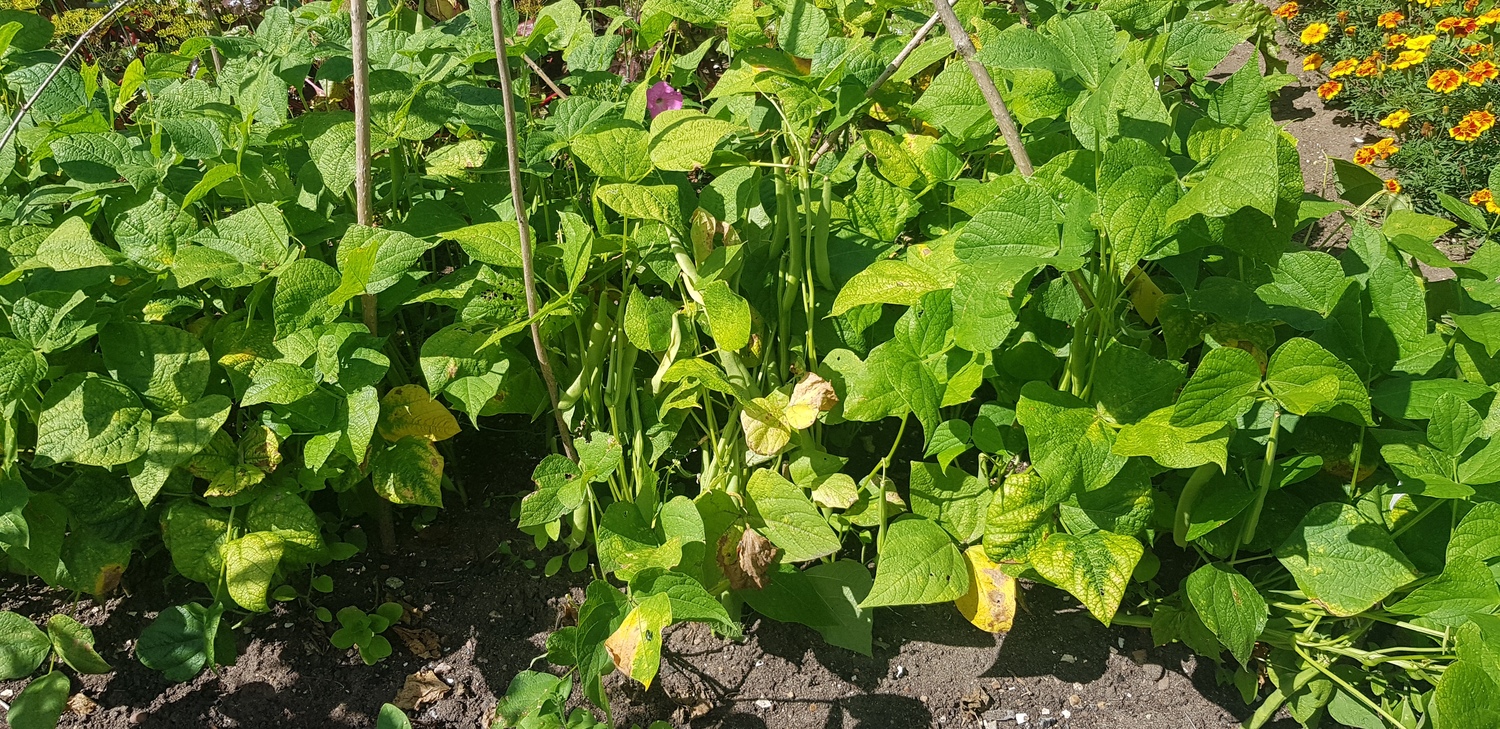
The Sitona weevil damages various leguminous plants, especially peas, beans, vetches, and lupins. These weevils are 3-5 mm long and have greyish bodies. Their elytra are marked with ridges, and their head has a proboscis. They begin feeding early in the spring. The weevils gnaw on the soft tissue of the leaves, creating relatively regular round holes (a single weevil can chew about 6 mm² of leaf area per day). They may also damage the growing tip of the seedling, making the Sitona weevil particularly harmful to young plants. The weevils feed for about 1.5 months.
Protection. The most important prevention measure is to treat the seeds with insecticide.
Bean weevils are 2-3.5 mm long, broad, stocky, brownish-grey insects with bodies covered in dense yellowish-green hairs.
Protection: To protect beans from weevils, it is important to ensure that these beetles do not enter storage areas. The storage areas should be disinfected, and the beans should be kept in cooler rooms to reduce the risk of infestation.
Bean aphids are often found in bean crops. The adults can be winged or wingless, about 2.4 mm long, yellowish, with dark brown or greenish hues. The larvae are green, and the nymphs have white waxy markings on their sides. This is a widely spread pest that can damage both field crops and greenhouse plants. It commonly affects beets, spinach, beans, peas, and many other plants. Over the summer, more than 10 generations of aphids can grow. In spring and summer, these pests reproduce parthenogenetically, with the autumn generation being bisexual. If the spring is early, warm, and many aphids hatch from overwintering eggs, an increased spread and damage by bean aphids can be expected.
Protection: Destroy bushes and weeds growing near the crops, and when the first aphid colonies are spotted, spray the crops with insecticides and aphicides.
Bean Varieties
The diversity of bean species and varieties in the world is very large. In tropical and subtropical countries of the Americas, Asia, and Africa, up to 200 different species grow, of which about 20 are widely cultivated, and 9 species have more significant practical importance.


